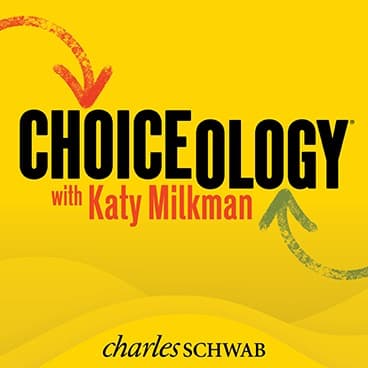Scientist Mode: With Guests Adam Grant & Luca Parmitano
Important decisions can be complex and difficult to make. We're at the mercy of certain behavioral biases, and we often face a degree of uncertainty. And while it's helpful to be aware of our shortcomings and mindful of our incomplete picture of the world, there is a proven way to make better decisions, on balance.
In this episode of Choiceology with Katy Milkman, we look at how questioning our basic assumptions and thinking like a scientist can help us untangle the knottiest of problems and make choices with greater confidence.
Luca Parmitano was the first Italian astronaut to perform an EVA—an extravehicular activity, otherwise known as a space walk—in 2013. During that EVA, Luca noticed a small amount of excess moisture in his space suit. Engineers chalked it up to a minor leak in his drinking container.
But on his second EVA, Luca nearly drowned in space. You'll hear from Luca himself about what happened and what it was like to have his helmet fill with water, 250 miles above the earth, outside the International Space Station. You'll also hear how NASA worked to prevent a repeat of what has been called "the scariest wardrobe malfunction" in the agency's history.
Luca Parmitano is an astronaut with the European Space Agency and a colonel in the Italian Air Force.
A version of Luca's story appears in Adam Grant's new book Think Again: The Power of Knowing What You Don't Know.
Adam Grant joined Katy to talk about the methods scientists use to avoid certain pitfalls, such as confirmation bias, in the search for objective information. Rather than treat our beliefs or opinions as truths, Adam encourages us to treat them instead as hunches. Hunches can be tested, as scientists test their hypotheses. Taking this scientific approach to difficult problems often yields better results in business, politics, and life.
Adam Grant is the Saul P. Steinberg Professor of Management at the Wharton School of the University of Pennsylvania. He's also host of the popular TED podcast WorkLife.
Choiceology is an original podcast from Charles Schwab.
If you enjoy the show, please leave a rating or review on Apple Podcasts.
Learn more about behavioral finance.
Explore more topics
All expressions of opinion are subject to change without notice in reaction to shifting market conditions.
The comments, views, and opinions expressed in the presentation are those of the speakers and do not necessarily represent the views of Charles Schwab.
Data contained herein from third-party providers is obtained from what are considered reliable sources. However, its accuracy, completeness or reliability cannot be guaranteed.
The policy analysis provided by the Charles Schwab & Co., Inc., does not constitute and should not be interpreted as an endorsement of any political party.
Investing involves risk, including loss of principal.
The book How to Change: The Science of Getting from Where You Are to Where You Want to Be is not affiliated with, sponsored by, or endorsed by Charles Schwab & Co., Inc. (CS&Co.). Charles Schwab & Co., Inc. (CS&Co.) has not reviewed the book and makes no representations about its content.
Apple Podcasts and the Apple logo are trademarks of Apple Inc., registered in the U.S. and other countries.
Google Podcasts and the Google Podcasts logo are trademarks of Google LLC.
Spotify and the Spotify logo are registered trademarks of Spotify AB.



